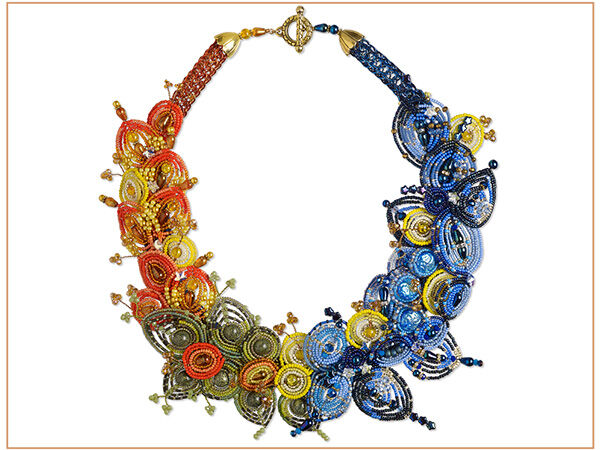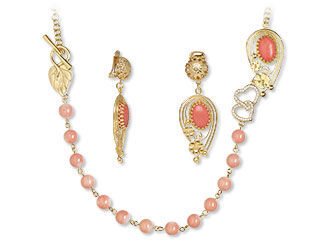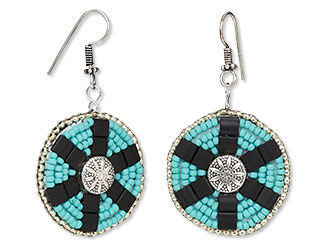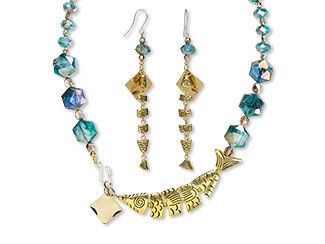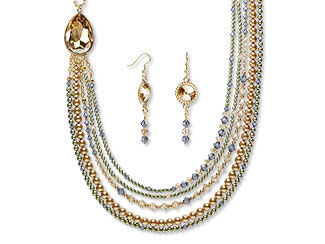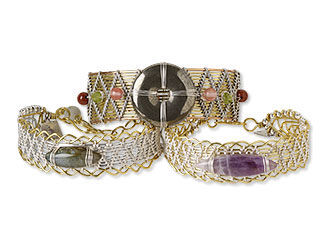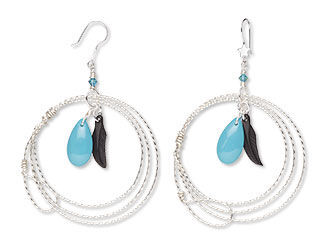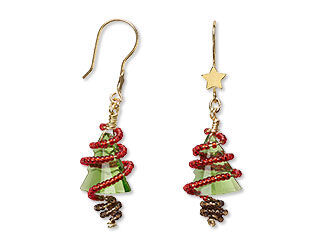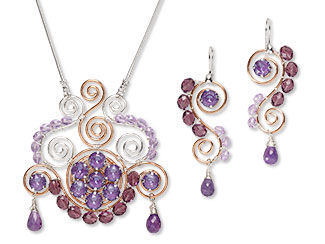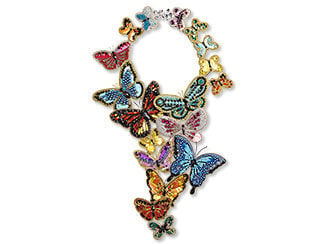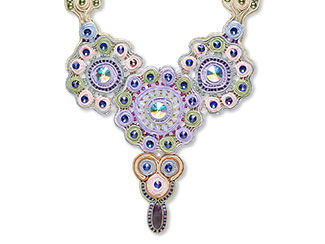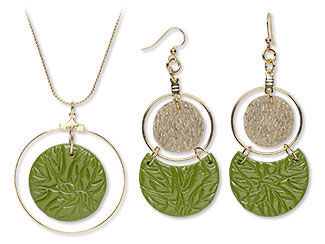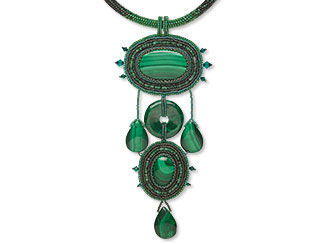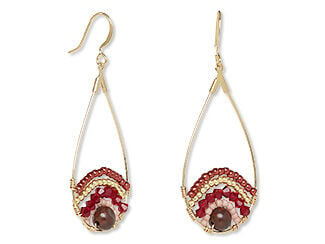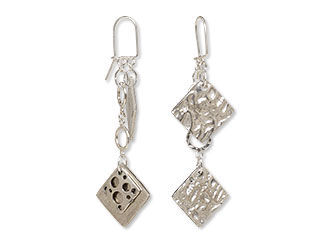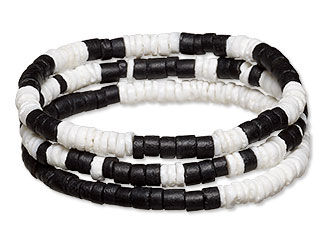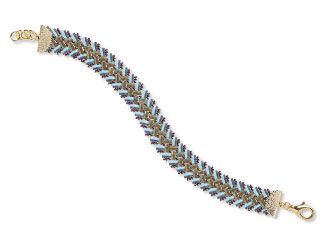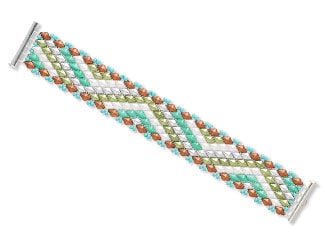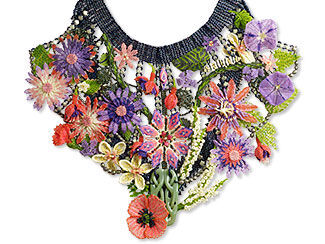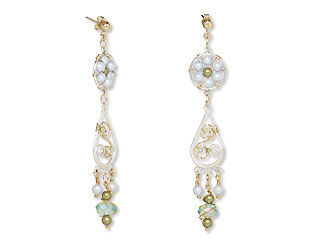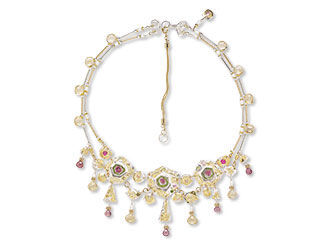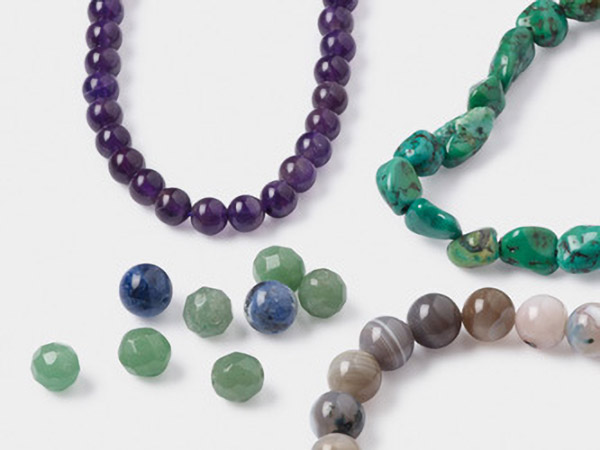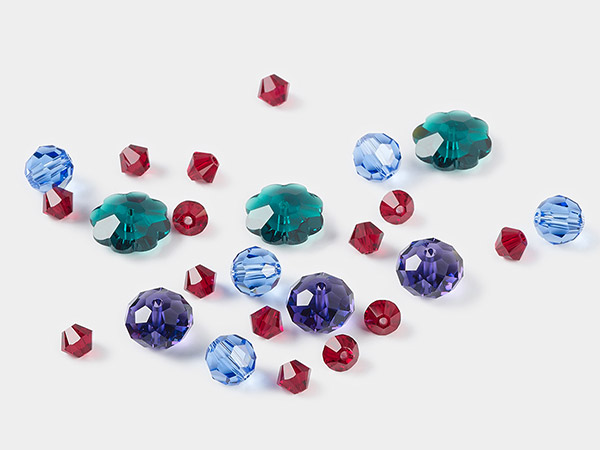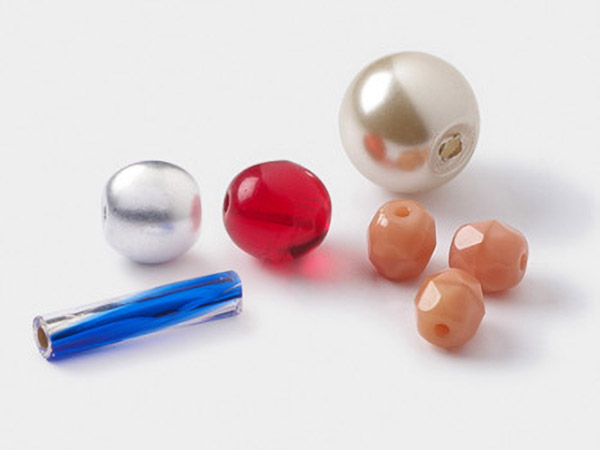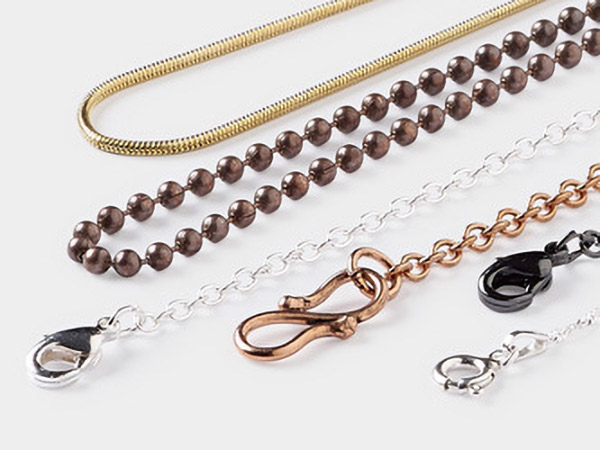Seven Principles of Design for Jewelry-Making
by Stephanie J. Eddy, Design Idea MH62
Making jewelry is a creative endeavor and, like all types of art, benefits from the basic principles of design. This article will cover the concepts of balance, emphasis, movement, proportion, contrast, pattern and unity, complete with examples. When considering these principles, it's important to note that they do not exist in isolation but rather overlap, working together as helpful tools for the jewelry artist.
Balance
Balance in jewelry design refers to the distribution of materials, colors, texture and space. There are three types of balance: symmetrical, asymmetrical and radial. Symmetrical, also known as formal balance, is a mirror image. If you draw a line down the center, all the elements on one side mirror the other. Asymmetrical, or informal balance, is when each side of an object is different yet the components are balanced to each other using size, texture, color and weight, or a combination of factors. Radial balance occurs when elements radiate from a center point. There is also the exception to this rule with intentionally off-balanced designs which create visual interest and suggest motion.
Emphasis
Emphasis helps to bring focus to a particular area in a piece of jewelry, like a handmade bead or focal. It helps to draw the eye exactly where you want it. Placement, size, texture and color are all tools that can help accentuate a unique component. Placement is crucial in the principle of emphasis in design. Your focal component is the heart of your piece, so take some time to figure out where you would like it to be and how you would like to make it stand out.
Movement
This concept is about using elements such as shape, orientation, color and size to gracefully direct the viewer's gaze through a piece. It's all about guiding the viewer's eye through your design, creating a dynamic flow that tells a story. Think about the path you want the gaze to follow, whether it's a swirl of colors, a cascade of shapes or a play of light and shadow, each aspect should lead the viewer's eye in a visual dance. Embrace movement in your designs to create pieces that not only adorn but also captivate.
Proportion
Proportion is the relationship of one part of a design to another or one area to the whole. It conveys the feeling of unity when all the elements (color, size, amount) in a particular jewelry piece relate well to each other. When the relative size of elements seems wrong or out of place, it intuitively feels off. You can use uniform ratios or take a more instinctual approach and look closely at the individual elements in your piece. Do they feel like they visually fit? Lay it all out on a bead board before construction to easily adjust anything that does not seem to belong.
Contrast
Contrast in design is created by using elements that differ from one another. It's easy to think of in terms of color, but you can also use texture, shapes and sizes, or a combination, to build contrast. For a piece that is energetic and pops, use a complementary color scheme—colors opposite each other on the color wheel. At the opposite end of the spectrum, use varying shades of the same hue for a calming effect. Or try the most striking contrast of all: black and white. Pairing black and white creates dimension, depending on the background.
Pattern
A pattern is a composition created by repeating elements. They give structure and cohesion to designs and are something we learn to make early on in our lives. Designs can range from simple compositions with just a few components to complex works of art with many repeating items.
Unity
Unity in design is the feeling of completeness and harmony. A unified design is perceived as a whole, more than the sum of its parts. This principle is the culmination of successfully applied design principles. Start with a rough idea of what you are trying to achieve. Think of the feeling or theme you wish to convey through your jewelry and go from there. Even if your design style is freeform, a basic outline helps give direction while allowing for artistic expression.
Embark on your jewelry-making journey with these seven principles in hand and watch your creations come to life with balance, beauty and harmony. Let each piece tell its unique story, a reflection of your artistic vision and skill.
Shop for Your Materials Here:
Have a question regarding this project? Email Customer Service.
Copyright Permissions
The pieces featured in the Gallery of Designs are copyrighted designs and are provided for inspiration only. We encourage you to substitute different colors, products and techniques to make the design your own.
All works of authorship (articles, videos, tutorials and other creative works) are from the Fire Mountain Gems and Beads® Collection, and permission to copy is granted for non-commercial educational purposes only. All other reproduction requires written permission. For more information, please email copyrightpermission@firemtn.com.
